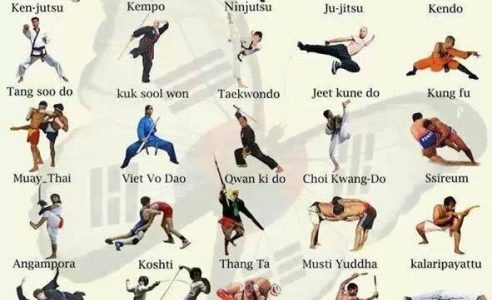Introducing The Selection Of Martial Arts Disciplines: A Guide From Martial Arts To Taekwondo
Introducing The Selection Of Martial Arts Disciplines: A Guide From Martial Arts To Taekwondo
Blog Article
Produced By-Osman Russo
Are you tired of sensation overwhelmed by the substantial world of fighting styles? With numerous styles to pick from, it can be very easy to obtain lost in a sea of punches, kicks, and strange names. However fear not!
This conversation will debunk the various martial arts styles, taking you on a trip from the powerful strikes of Martial arts to the dynamic kicks of Taekwondo. Prepare to reveal the origins, techniques, and approaches behind these ancient art kinds.
So, tighten your belt and prepare to start an enlightening expedition right into the exciting world of fighting styles.
Origins of Martial Arts Styles
The origins of martial arts designs can be traced back to old civilizations and their requirement for protection and battle techniques. Throughout background, various cultures developed their own one-of-a-kind methods of battling, each with its own collection of methods and approaches.
In China, as an example, fighting styles designs such as Kung Fu and Tai Chi were created as a means of protection and enhancing physical and psychological health.
In Japan, the samurai warriors created styles like Karate and Judo, concentrating on self-control, precision, and proficiency of the body.
In a similar way, in Korea, Taekwondo became a martial art stressing high kicks, quick motions, and mental perseverance.
These very early worlds laid the foundation for the varied array of martial arts styles that exist today, each with its own rich history and cultural value.
Strategies and Training Approaches
To understand fighting styles designs, professionals must discover various techniques and training methods.
Strategies are the particular motions and actions utilized in battle, such as strikes, kicks, throws, and obstructs. Various fighting styles designs have their own unique set of techniques that professionals need to master via strenuous training.
Training techniques differ depending upon the design, however they generally entail a mix of physical conditioning, drills, competing, and forms.
global martial arts - chapter 75 is essential to build toughness, versatility, and endurance. https://ktul.com/news/local/jenks-martial-arts-academy-wins-national-titles assist professionals refine their methods and enhance their speed and precision.
Sparring allows professionals to exercise their techniques in a controlled, realistic setting. Forms, also called kata, are deliberate series of motions that help practitioners establish muscular tissue memory and focus.
Approaches and Principles
Discovering the viewpoints and principles of fighting styles styles can give you with a much deeper understanding of your picked self-control. Each fighting style has its own unique philosophy and set of assisting concepts that form the means it's practiced.
For example, Karate highlights technique, regard, and self-control. It instructs professionals to focus their minds and bodies, enabling them to safeguard themselves while maintaining a feeling of internal peace.
On the other hand, Taekwondo places a solid focus on rate, dexterity, and versatility. https://francisconzlwm.kylieblog.com/33762390/crucial-taekwondo-techniques-for-newbies are rooted in the tenets of politeness, honesty, perseverance, self-constraint, and resolute spirit.
Conclusion
Since you've discovered the origins, methods, and philosophies of different martial arts designs, you have a deeper understanding of these old techniques.
Imagine a young karate pupil, practicing with undeviating decision and emphasis, breaking through boards with a powerful punch.
Their trip showcases the commitment and toughness required to grasp a fighting style, reminding us that with self-control and perseverance, anything is possible.
